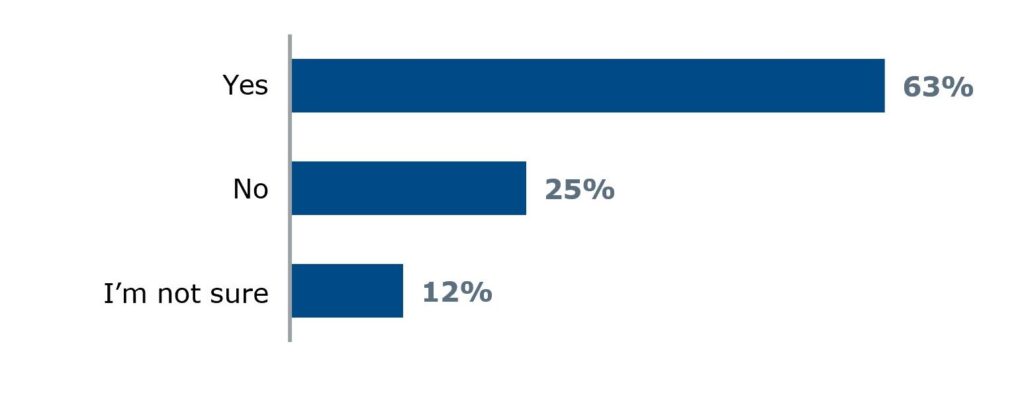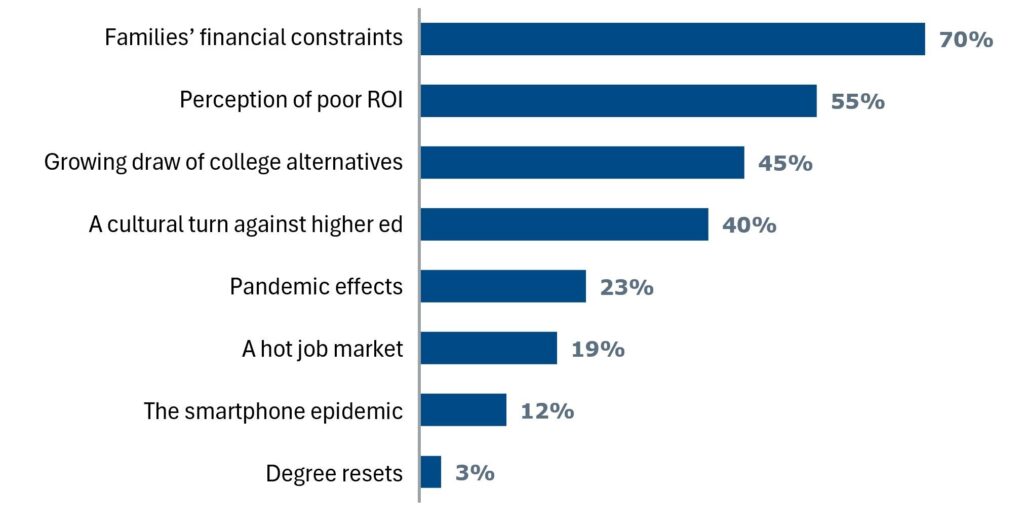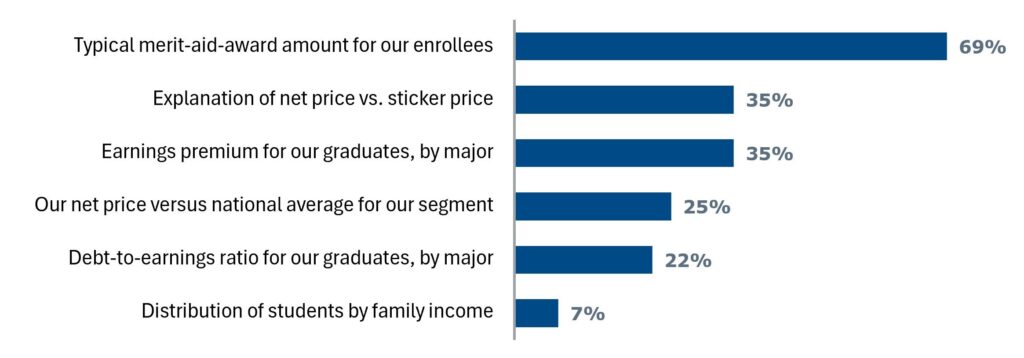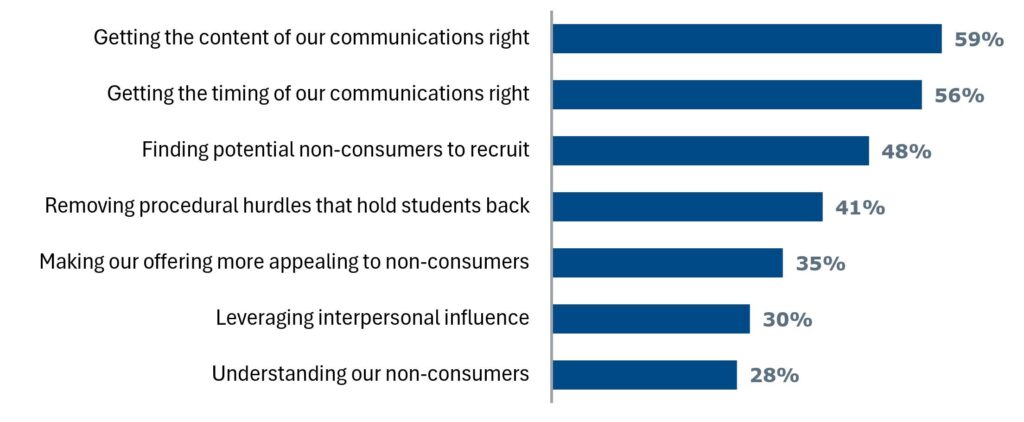What enrollment leaders are saying about the Great Opt-Out
The percentage of high school graduates attending four-year colleges and universities has seen a historic decline in recent years—a phenomenon sometimes called “non-consumption.” As part of EAB’s ongoing conversation with the nation’s admissions teams, we recently polled more than eighty enrollment leaders from around the country regarding their experiences with this important trend. Read on to find out what we learned.
Background on the poll
The poll, which we did during a webinar presentation of recently published EAB research on non-consumption, asked attendees to respond to five related questions, from the impact that reduced rates of college-going have had on their institutions to tactics they are using to address it. The material below shares the poll results for each question and offers some related commentary.
Question 1: Enrollment Impact
Has your enrollment been impacted by reduced college-going?

Commentary:
- A sizeable majority of respondents said their enrollment has been impacted by non-consumption. This is exactly what I expected to see; EAB research has shown that the rate of college-going has dropped considerably for most student demographics, including the wealthiest (who, although a relatively small percentage of non-consumers, saw the biggest decrease).
- I’m guessing that the 25% of schools reporting no impact include many who serve students from low-income households—the only group whose rate of enrollment at four-year institutions has not decreased meaningfully in recent years.
Question 2: Causes
Which drivers of non-consumption do you believe are most relevant for your institution?

Commentary:
- The two causes of reduced college-going that ranked most highly in the poll match what students themselves tell us; survey research has shown that concerns over affordability and uncertainty regarding the value of a degree feature prominently among reasons students give for skipping college.
- Other EAB survey research, not illustrated here, has found that a majority of non-consumers are open to the idea of going to college. In fact, many apply and are admitted. And while financial considerations do loom large in many students’ college avoidance, other, sometimes underappreciated factors play an important role as well. The most common reason that high school graduates we surveyed gave for not enrolling was, by a wide margin, taking time off before college—a category that covers a large and varied set of circumstances and motivations.
Question 3: Value Communications
Which value related messages have you hardwired into your recruitment-marketing communications?

Commentary:
- These responses suggest that many schools have significant running room on value messaging—a top priority given potential non-consumers’ preoccupation with affordability and their doubts about the payoff of a degree. A helpful first step is reviewing examples worthy of emulation—this one, for instance.
- Two items from the list of responses merit special mention: the earnings-premium and debt-to-earnings metrics. The Department of Education plans to publish these stats for every academic program at every college and university in the country, starting in 2026, via its Financial Value Transparency (FVT) initiative. For schools that make a favorable showing on these measures, FVT data could be a potentially powerful part of a larger value-communications strategy.
Question 4: Streamlining the Admissions Process

Commentary:
- As illustrated, a sizable majority of poll participants reported reducing their application requirements—a highly impactful move when it comes to eliminating obstacles to matriculation. Analyses of IPEDS data by my EAB colleagues have shown a clear correlation between streamlined applications and improved admissions outcomes, from application volume to enrollment.
- I expect to see more schools proactively notifying students of eligibility for admission, due to increasingly widespread adoption of direct admission—especially institutions that are not very selective (those admitting upwards of, say, 60% of applicants). A recent EAB survey found that between 40% and 50% of less-selective and least-selective institutions, respectively, already offer direct admission, and an additional 11% to 32% are planning on doing so.
Question 5: Tactic Prioritization
What categories of tactics for addressing non-consumption are you most interested in pursuing?

Commentary:
- Among the options for addressing non-consumption, our poll participants showed a strong preference for ones based on improved communication with students and their supporters. This makes sense, insofar as negative student attitudes toward college going—as opposed to, say, hard material constraints—both play a major role in college avoidance and can be influenced through your interaction with students.
- While the two top-scoring items are the only ones to explicitly address communication, several of the other elements on the list have an important communications component to them as well—for example, proactively notifying students of their eligibility for admission does much to remove procedural hurdles that hold students back.

More Blogs

The real demographic crisis isn't national—it's regional

How AI-powered ad filters are disrupting enrollment marketing campaigns
